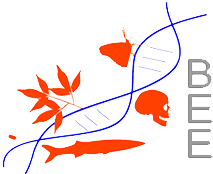The New York Times, November 7, 2013
CARL ZIMMER
In 1799 the great naturalist Alexander von Humboldt and his companions set out from Caracas, Venezuela, to climb the Andes. They struggled up a mountainside enveloped in mist so thick they had to clamber over rocks by hand.[...] Von Humboldt had stumbled into a remarkable ecosystem, known as a Páramo. Páramos blanket the Andes in Venezuela, Ecuador and Colombia, growing at altitudes 9,200 to 14,800 feet above sea level. [...]
“They’re like islands in a sea of forest,” said Santiago Madriñán, an expert on Páramos at the University of the Andes in Colombia
But according to a new study, the Páramos are even more remarkable than von Humboldt could have realized. They are the fastest evolving place on the planet.
Scientists have long known that in certain spots, evolution runs faster than normal. The Galápagos Islands, for example, are home to some 13 species of Darwin’s finches, which all evolved from a single group of birds that originally colonized them. The archipelago is just a few million years old, however, which means that all their diversity has evolved in a geologically short period of time.
In recent years, scientists have identified other regions where evolution is running fast. To measure its speed, researchers have looked at the DNA of species living in each place. The longer it has been since two species diverged from a common ancestor, the more time each lineage has had to accumulate mutations. Young species have relatively few mutations. …
Radiotrescienza – puntata del 12/11/2013:
Esistono luoghi in cui le specie si modificano più rapidamemente che in qualsiasi altro posto al mondo: sono i Pàramos, ecosistemi andini già noti per la loro straordinaria biodiversità. Con Goffredo Filibeck, ricercatore di botanica ambientale all’Università della Tuscia, indaghiamo la relazione tra biodiversità vegetale e ritmi evolutivi delle piante.
Anche l’evoluzione dell’uomo ha avuto le sue accelerazioni improvvise, come ci spiega Giorgio Manzi, paleoantropologo all’università La Sapienza e autore del saggio Il grande racconto dell’evoluzione umana (Il Mulino 2013).
riascoltabile su: http://www.radio3.rai.it/dl/radio3/programmi/PublishingBlock-aaee447d-8a68-46e9-b13f-43525399e0d8-podcast.html






Università di Tor Vergata